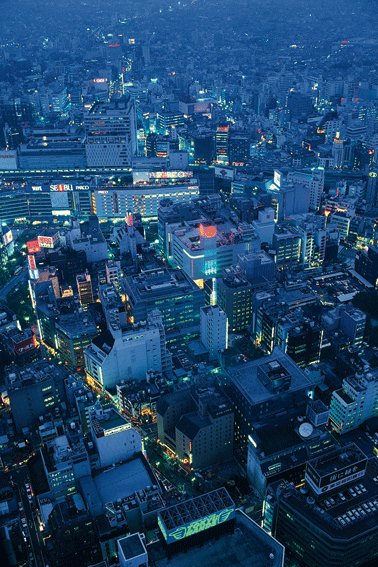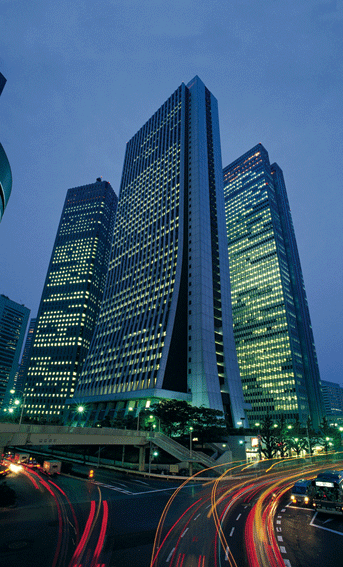
![]() Travel and Adventure
Travel and Adventure

Japan
Treading through Tokyo
For all its relentless concrete and gadgetry, no big city moves so easily to nature’s rhythm. This walk, affords glimpses of Tokyo’s layered past as well as insight into its village within.
By: David Pilling*
Tokyo is one of the world’s biggest, most densely packed cities. Yet few villages feel as distinctly old-fashioned as the average Tokyo neighborhood, with its tangle of bicycles, stalls selling blocks of tofu, fishmongers, tatami weavers and street festivals. Everywhere are echoes of the countryside that many Tokyoites left only a generation or two ago. Menus at the humblest izakaya change with the seasons, and department stores stock regional delicacies and local crafts.
For all its relentless concrete and gadgetry, no big city moves so easily to nature’s rhythm. This walk, though weaving through the central Tsukiji and Ginza districts, affords glimpses of Tokyo’s layered past as well as insight into its village within.
The Japanese like fresh food, preferably raw, and Tsukiji Market, the world’s largest fish wholesale market, is Tokyo’s window on the sea. The early riser (or jet-lag victim) should arrive by 5 a.m. for the tuna auctions. The market periodically restricts tourist access, but you should be able to peep at one of the enormous auction floors lined with shiny black tuna and alive with the clanging of bells and the chanting of auctioneers.
Even if you get there later, Tsukiji is a fascinating world with its own slang and customs, and stalls selling some 400 varieties of sea creature. Unlike much of the capital, refined and polished, Tsukiji has the rough feel of mercantile Edo, the city’s name before the Meiji Restoration of 1868. Edo was also the center of shogunate power and, in the “high town” around Edo Castle, where this walk ends, the samurai and daimyo (feudal lords) congregated.
Head back out through Tsukiji’s Seimon, main gate, and turn right down Shin-Ohashi Avenue toward the outer market, Jogai, where Tokyoites come to shop for special occasions. (Tsukiji proper is for buyers from sushi restaurants, hotels, fishmongers, and so on.) Here you will find soba and tempura stalls and, naturally, some fine sushi. My favorite place is Kanno, a tiny donburi-mono (rice-dish) shop. To get there, keep going down Shin-Ohashi Avenue until, on your right, you see a display of open-toed zori sandals and the rubber boots worn by market traders. Turn right down the narrow passageway immediately after and you should see a line of people waiting for one of Tokyo’s greatest bargains. To speed things up, Kanno’s staff will take your order while you wait for a seat at the rickety counter. Ask for maguro-don, fresh slices of raw tuna on rice, or sanshu-don, rice heaped with tuna, salmon eggs, and sea urchin.
Continue down Shin-Ohashi Avenue to the broad Harumi Avenue and turn left until, a couple blocks along, you reach Urikiriya. This is a wonderful place to browse Japan’s varied pottery styles, most linked to a particular region. This is not Tokyo’s most elegant ceramic shop, but a jumble of incomplete sets and household pottery. But everything is affordable and some of it exquisite.
Keep going down Harumi Avenue until, on the opposite side of the road, you spot an extravagant building hung with red lanterns. Kabuki-za is home to kabuki, a drama that traces its roots back 400 years to an open-air revue. Kabuki uses a unique theatrical aesthetic that combines dance, three-stringed samisen music, and highly stylized acting. More like watching a moving painting than a Western drama, kabuki is filled with thrilling moments of bravado and poignancy. It also retains an earthy feel, both in the content of the stories, and in the guttural reactions of the audience. Headphones with English explanation are available (and essential), and tickets for one act are available on the day of the play.
Cross back over Harumi Avenue and continue until, on the right, you see the distinctive Wako building, a curved, classical white stone department store. Continue until you reach Akebono, a tiny but delightful Japanese sweet shop. Try the pounded rice mochi balls, which, depending on the season, are filled with strawberries, chestnut paste, or red bean paste. Made fresh each morning, they must be eaten by nightfall.
Carry on toward the Hankyu Department Store. Immediately after entrance C1 to Ginza Station, turn left down a narrow street lined with noodle shops. When you reach a dead end, turn right under the railway track. At night, steam rises from the yakitori stands crammed with revelers seated outside eating grilled chicken.
Commuter trains and the Shinkansen bullet train clatter overhead. On the other side of the tracks, head left down the alley and, turning right by the side of the Imperial Hotel, you’ll reach a cake-like building, a vision in pink.
Continue on past the Imperial Hotel (and the nearby Godzilla memorial) to Hibiya Avenue. Cross the road, turn right, and walk along the outer moat of the Imperial Palace, once Edo Castle. About 10 minutes along, just before you reach the Palace Hotel, turn left and walk beside the inner moat to Ote-mon, big gate. Here, the East Garden of the palace is open to the public except on Mondays and Fridays. Get there by 3:30 p.m. to catch the last entry time. Behind the medieval walls another world exists, this one of tranquil gardens, hedgerows, lawns and ponds.
Japanese gardens are beautiful landscapes of idealized nature, with every branch seemingly twisted and clipped to human design. It’s a wonderful place to relax, but after a while you may find yourself hankering for the life and energy of the city.
* David Pilling is Tokyo bureau chief of the Financial Times.